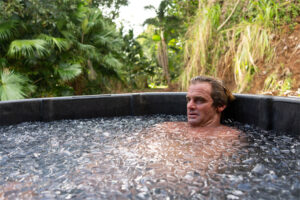Introduction
In the continuous desire to achieve supreme performance and physical performance, fitness enthusiasts are always looking for ways to boost their recovery speed to heal more efficaciously, as well as generally remain ahead of the competition. One method that is gaining popularity at a rapid rate is cold-water immersion (CWI), a method that involves soaking the body in cold water following an intense workout. However, does it meet the hype? Is it possible to take an ice bath that actually improves the process of recouping and helps you move towards the fitness objectives you have set? This complete guide will dive into the freezing waters of this method to determine.
The benefits of cold water Immersion
Reduced Muscle Soreness
The most well-known benefit of CWI is its capacity to alleviate the effects of delayed-onset soreness in the muscle (DOMS). The sudden reduction in temperature has been believed to enlarge blood vessels and reduce metabolic activity. This can decrease swelling and breakdown. Cold water also functions as an effective analgesic, inducing numbness in sore joints and delivering instant relief.

Improved Circulation and Reduction of Inflammation
If you take the cold dive, the body responds by trying to warm up, which means that blood flow is directed away from the extremities towards the middle. After exiting the water, this process, referred to as vasodilation, sends the blood with nutrients to muscles, possibly helping speed up healing by flushing metabolic waste out and reducing the quantity of inflammation-causing chemicals that are present in tissues.
Increased Performance and Recovery Speed
Alongside the reduction in size in muscle cells. Traditional changes to tissues result in DOMS, or muscle weakness, that resolves after the course of a week. The advocates of CWI claim that by short-circuiting the normal processes of recovery and allowing athletes to return to training sooner and with a higher volume than they typically do,. This can lead to increases in performance over time.
How to Implement Cold Water Infusion
Guidelines for Duration and Temperature
There’s no universal approach to CWI. The ideal water temperature ranges from very cold to tap water that is cold. You should aim for a range between 50 and 59 °F (10 and 15 °C) and then submerge yourself for a period of 10 to 15 minutes. It’s essential that you use a thermometer to determine temperature, not relying on “feeling,” because water that is too cold or submerged for too long could cause hypothermia.
Safety Precautions
CWI isn’t free of risk. People with heart disease or diabetes, as well as other medical conditions that cause them to be concerned, must consult their physician prior to adding CWI to their daily routine. It is also recommended not to attempt CWI on your own, particularly for long durations, in order to avoid any possible complications or accidents that could result from the body’s reaction to stress from the cold.
Alternatives to Ice Baths or Cold Showers
If you do not have the time or stomach room for an iceberg to be placed in your bathtub, ice baths are an alternative that is equally effective. This requires adding ice bags to a chilled bath. Also, a post-workout hot shower may grant certain advantages due to the natural desire to move into the warm water and constricting blood vessels and the decrease in inflammation, though at a lower level.
Study or Success Stories, Case Studies or Success Stories
Actual-life examples of athletes benefiting by Cold-Water Immersion
Many well-qualified athletes are adamant about CWI and its beneficial effects on their recuperation. From footballers to marathon runners, CWI is seen as an essential tool for recovery plans post-performance.
Tips for a Successful Recovery
Nutrition and Hydration Post-Immersion
After any session of recovery, whether it’s CWI or any other, the need for hydration and a balanced diet are essential. A nutritious meal that is high in carbohydrates and protein within one hour after the session will help maximize the anabolic threshold that occurs after physical activity.

Combining other methods of recovery, such as Stretching or massage,
While CWI is a powerful tool by itself, combining it with other techniques for recovery like stretching and massage therapy can increase its advantages. These extra techniques can enhance muscle flexibility and relaxation and also increase the flow of nutrients into muscles.
Conclusion
Cold water immersion might sound like an extreme choice for some, but for others, they consider it a fundamental part of their exercise routine. With the potential benefits of less muscle soreness and faster recovery time, it’s easy to see why this technique has attracted the interest of many in the sporting community. As with all fitness routines, the right amount of moderation and sanity are the keys. If you’re planning to take a quick plunge in the freezing ocean or prepare yourself for a full-body ice shower, make sure you do your research, remain up-to-date, and be aware of your body. Enjoy your chills!
